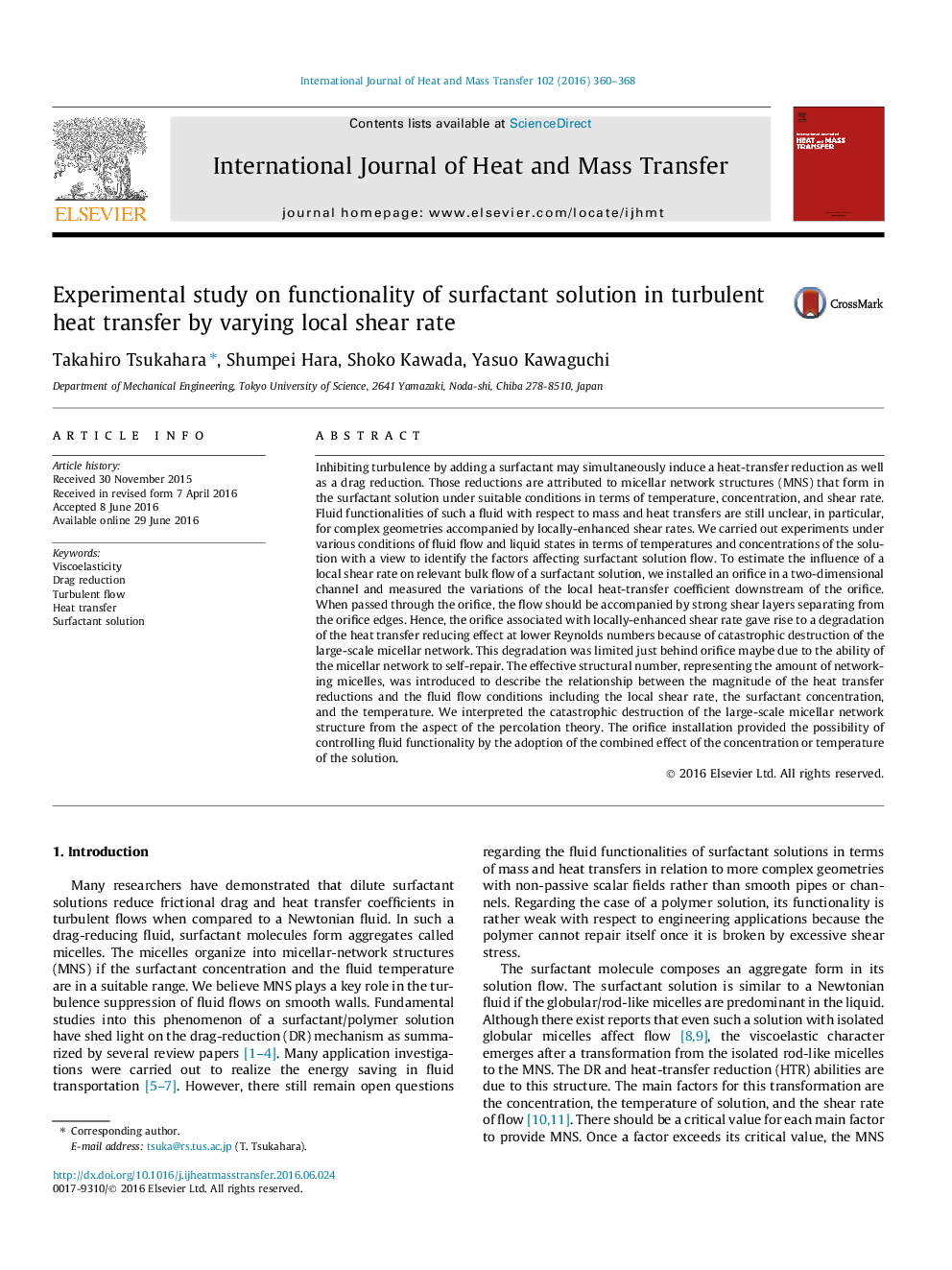| کد مقاله | کد نشریه | سال انتشار | مقاله انگلیسی | نسخه تمام متن |
|---|---|---|---|---|
| 7055111 | 1458040 | 2016 | 9 صفحه PDF | دانلود رایگان |
عنوان انگلیسی مقاله ISI
Experimental study on functionality of surfactant solution in turbulent heat transfer by varying local shear rate
ترجمه فارسی عنوان
مطالعه تجربی بر روی عملکرد محلول سورفاکتانت در انتقال حرارت متساوی با تغییر نرخ برش محلی
دانلود مقاله + سفارش ترجمه
دانلود مقاله ISI انگلیسی
رایگان برای ایرانیان
کلمات کلیدی
موضوعات مرتبط
مهندسی و علوم پایه
مهندسی شیمی
جریان سیال و فرایندهای انتقال
چکیده انگلیسی
Inhibiting turbulence by adding a surfactant may simultaneously induce a heat-transfer reduction as well as a drag reduction. Those reductions are attributed to micellar network structures (MNS) that form in the surfactant solution under suitable conditions in terms of temperature, concentration, and shear rate. Fluid functionalities of such a fluid with respect to mass and heat transfers are still unclear, in particular, for complex geometries accompanied by locally-enhanced shear rates. We carried out experiments under various conditions of fluid flow and liquid states in terms of temperatures and concentrations of the solution with a view to identify the factors affecting surfactant solution flow. To estimate the influence of a local shear rate on relevant bulk flow of a surfactant solution, we installed an orifice in a two-dimensional channel and measured the variations of the local heat-transfer coefficient downstream of the orifice. When passed through the orifice, the flow should be accompanied by strong shear layers separating from the orifice edges. Hence, the orifice associated with locally-enhanced shear rate gave rise to a degradation of the heat transfer reducing effect at lower Reynolds numbers because of catastrophic destruction of the large-scale micellar network. This degradation was limited just behind orifice maybe due to the ability of the micellar network to self-repair. The effective structural number, representing the amount of networking micelles, was introduced to describe the relationship between the magnitude of the heat transfer reductions and the fluid flow conditions including the local shear rate, the surfactant concentration, and the temperature. We interpreted the catastrophic destruction of the large-scale micellar network structure from the aspect of the percolation theory. The orifice installation provided the possibility of controlling fluid functionality by the adoption of the combined effect of the concentration or temperature of the solution.
ناشر
Database: Elsevier - ScienceDirect (ساینس دایرکت)
Journal: International Journal of Heat and Mass Transfer - Volume 102, November 2016, Pages 360-368
Journal: International Journal of Heat and Mass Transfer - Volume 102, November 2016, Pages 360-368
نویسندگان
Takahiro Tsukahara, Shumpei Hara, Shoko Kawada, Yasuo Kawaguchi,
